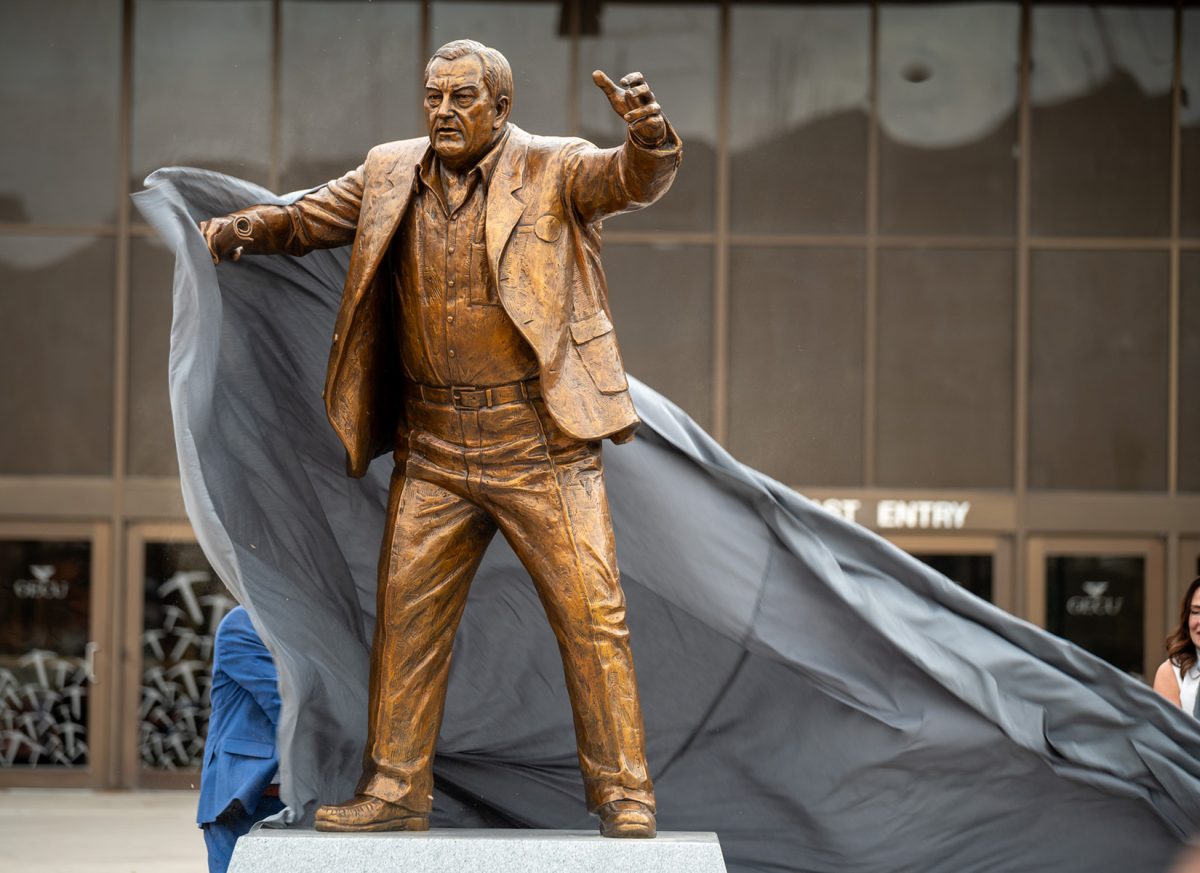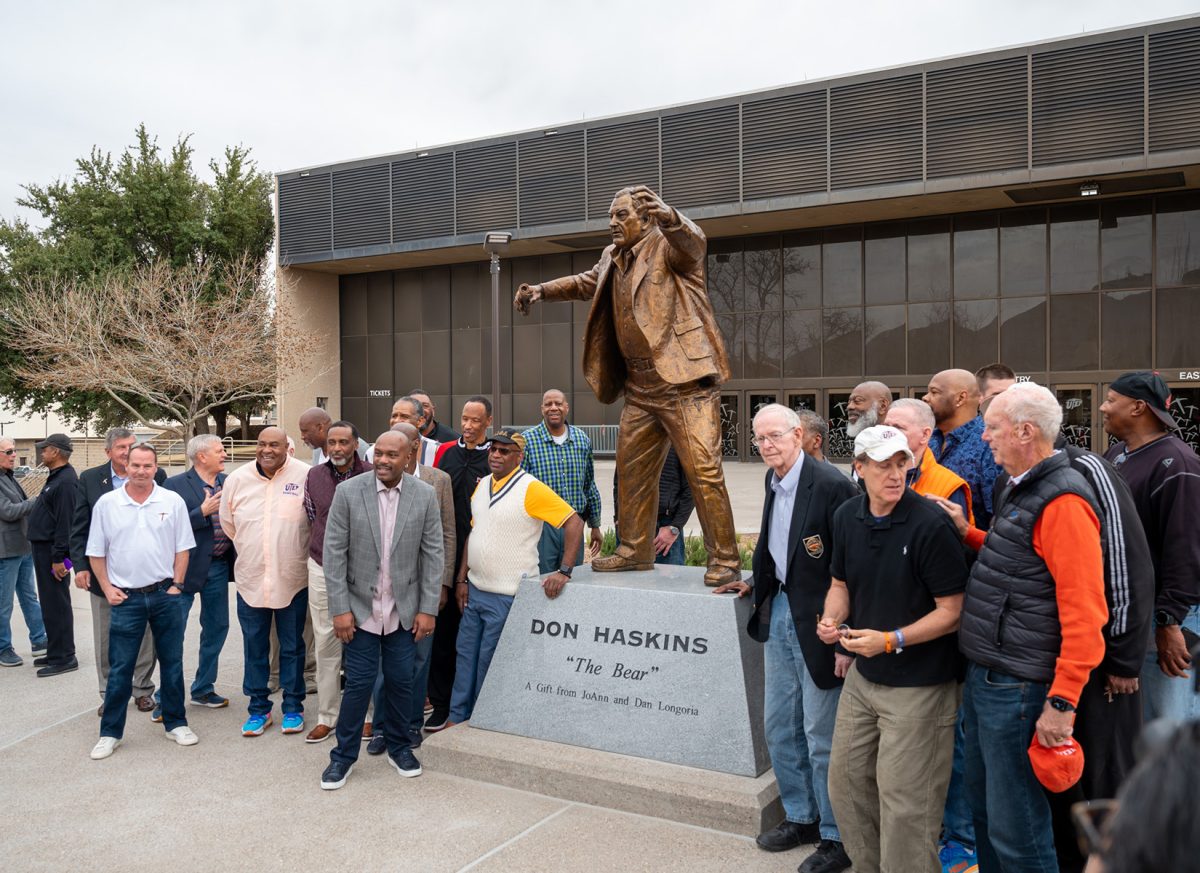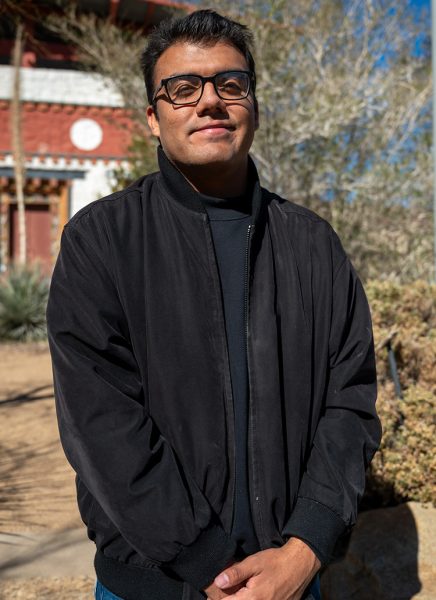The 1960s served as a pivotal decade for America. John F. Kennedy was assassinated in 1963, the Civil Rights Act of 1964 was passed by Lyndon B. Johnson and the Vietnam War raged on overseas. Amid all this stood what became one of the most pivotal moments in college basketball, and in modern sports history.
The 1966 NCAA Championship, won by Texas Western College, later known as UTEP, was the first championship game in which five black players started. Even though the Civil Rights Act had been passed, racism was still a major issue at the time.
Haskins was never one to judge based off skin color, and the 1966 NCAA Championship was no exception. He endured hate mail and death threats after the championship for starting five African American players, a move some saw as an exploitation of black people. Despite this, Haskins pushed forward and continued to coach the game he loved.
“I was simply playing the best players I had. It was what I had done all year,” Haskins said.
The 1966 win brought popularity to Texas Western College, which became a struggle for Haskins when recruiting for the following season. With the university’s name changing to The University of Texas at El Paso in 1967, recruits had difficulty believing it was the same team that won the championship the year prior.
Haskins took over the basketball program at UTEP for the 1961-62 season, taking the team to an 18-6 record. His second year saw a 19-7 record and Haskins’ first of 14 NCAA tournament appearances.
Haskins retired in 1999 after 38 years at the helm of UTEP basketball program. In these years he led the Miners to 719 wins, making him the 19th of all-time Division One men’s basketball head coach. Haskins was also inducted into the Naismith Memorial Basketball Hall of Fame in 1997. He later passed away in 2008 as a beloved member and legend in the El Paso and UTEP community.
The 1966 team will always be remembered for breaking the race barrier in southern college basketball, as the achievement was immortalized in the 2006 movie, ‘Glory Road’.
Throughout his career, Haskins brought home seven WAC championships and has been the mentor for many NBA players, including Jim Barnes, who was the first pick for New York in the 1964 NBA draft and Tim Hardaway, who went on to play for the Golden State Warriors and the Miami Heat, among others.
Because of his legacy and accomplishments, Haskins has now received full recognition in a statue that was unveiled to the public Feb. 24, for fans and former players to honor him.
Players across almost 40 years of Miner basketball reunited at the Don to see “The Bear” in seven feet of bronze glory, exchanging stories and reminiscing about their college days under Haskins.
Bobby Dibler, a recent 2024 Naismith Hall of Fame nominee, is one of the players who took Haskins’ lessons both on and off the court, carrying them with him throughout his life and career.
“It was about as close to work as you could get doing something that you really enjoyed,” Dibler said. “He taught you so many things that you didn’t realize as a young person that he was teaching you.”
Dibler became an El Paso native and college referee after his years under Haskins and graduated from Texas Western in 1965 the year before the 1966 Championship. The lessons of discipline and hard work he learned from Haskins make this statue important to him.
“I think it’s incredible, I don’t know how it could’ve been done any better,” Dibler said.
Steve Yellen, another former player of Haskins from 1977-1981, was originally recruited from New York to play at UTEP. Yellen is now another player who calls El Paso home, as he announces UTEP basketball games alongside Jonathan Teicher. Yellen knows the impact that a statue and legacy like Haskins’ can have on an incoming recruit making their decision.
“Well first when they get a recruit at the El Paso Airport, and they bring him into the Haskins Center to show him campus, they’re going to park right here in that parking lot, steps away from the statue, they’re walking right by the Don Haskins statue, that’s where it will all start. Recruit weekend will start at the statue, think about that,” Yellen said. “You can talk there about the tradition and the lore and the great teams, the ’66 National Champions the first time any team started five blacks against five whites in a national championship game, the movie they made, ‘Glory Road’. They can be part of that tradition if they sign with UTEP.”
As Miners past, present and future go to the Don Haskins Center and see the statue, it serves as a reminder of Haskins’ glory days, and as a reminder to future generations to continue to build the program back to what it was almost 60 years ago.
Nicholas Maes is the sports editor and may be reached at [email protected]










